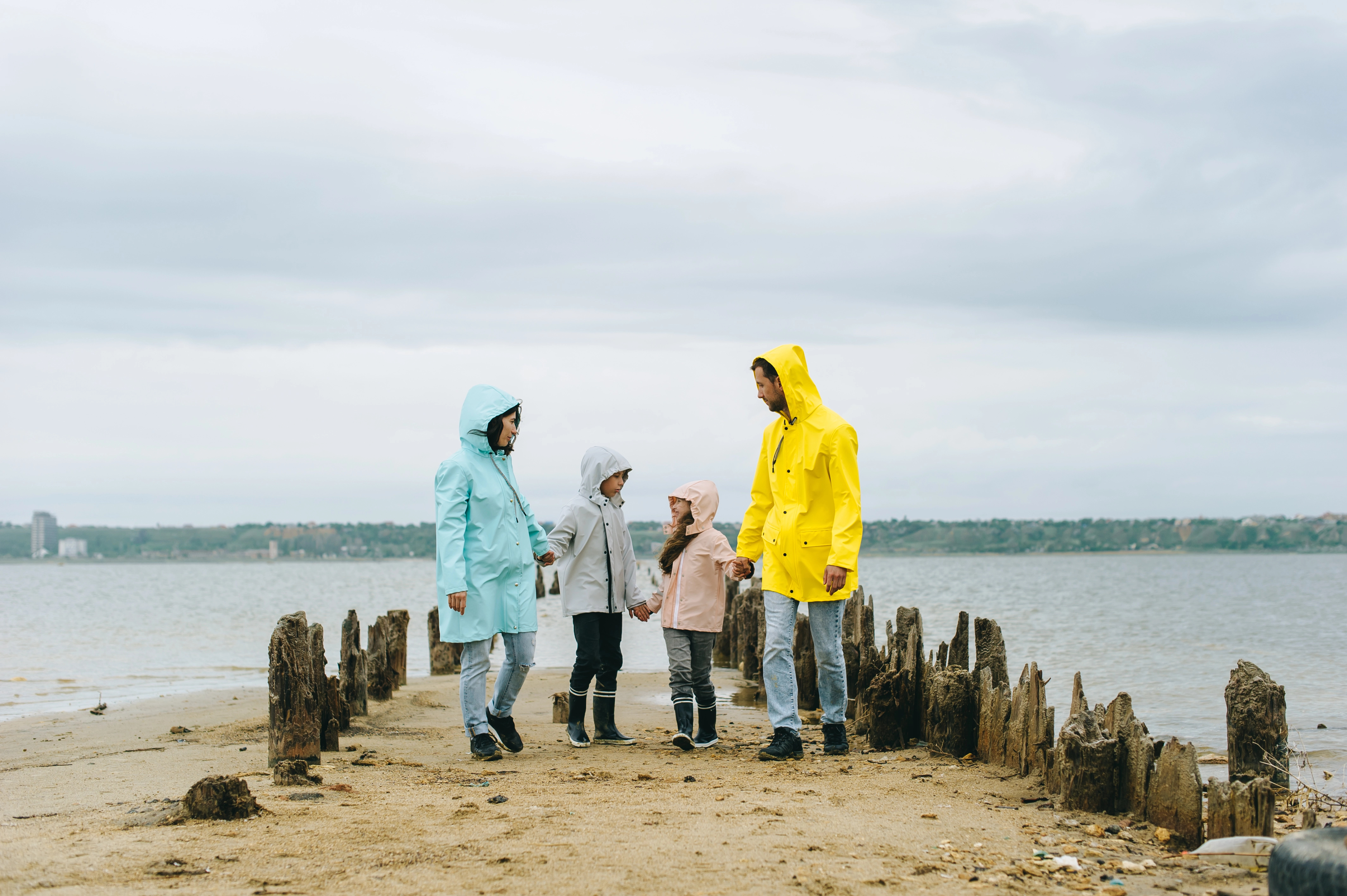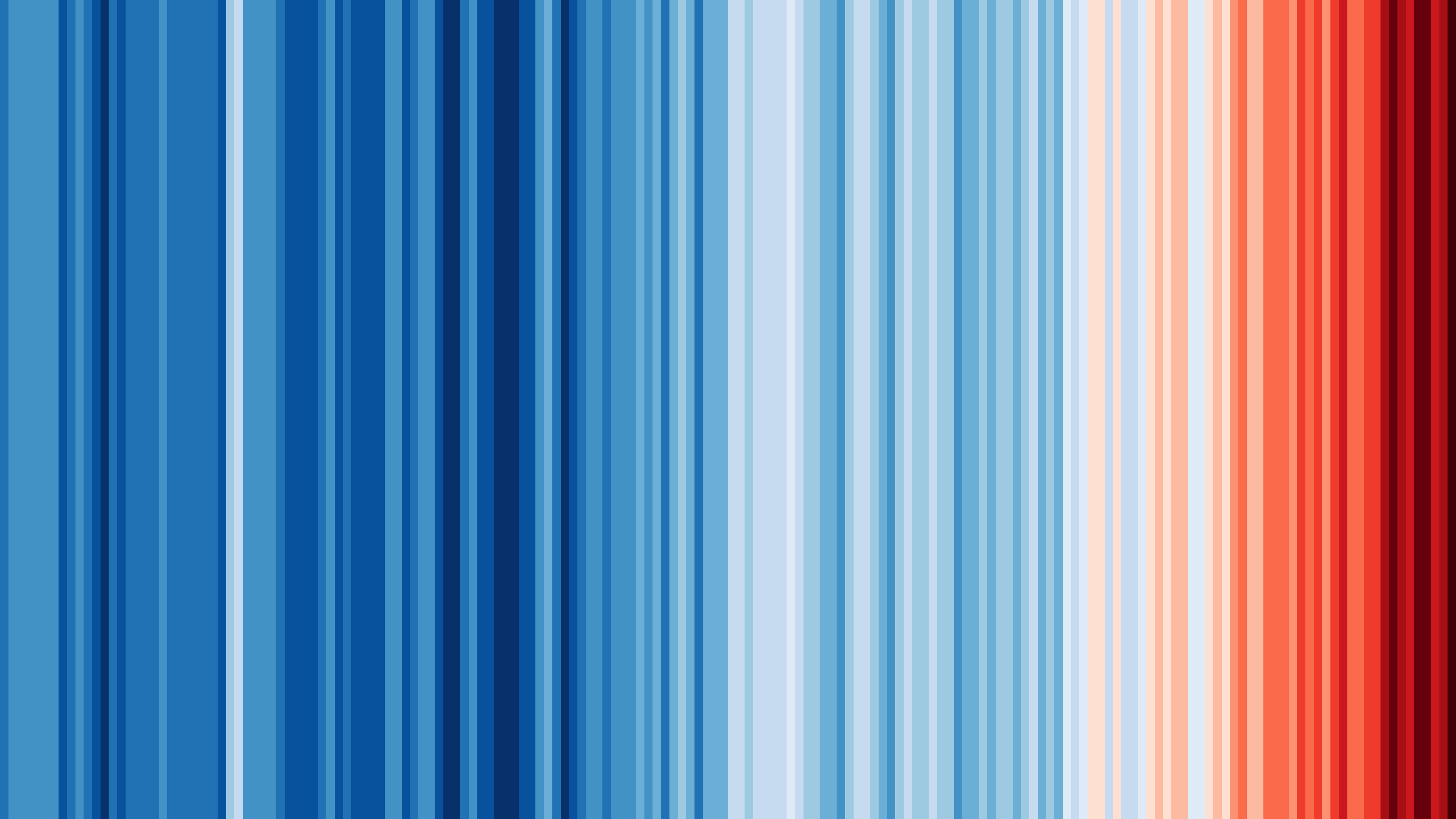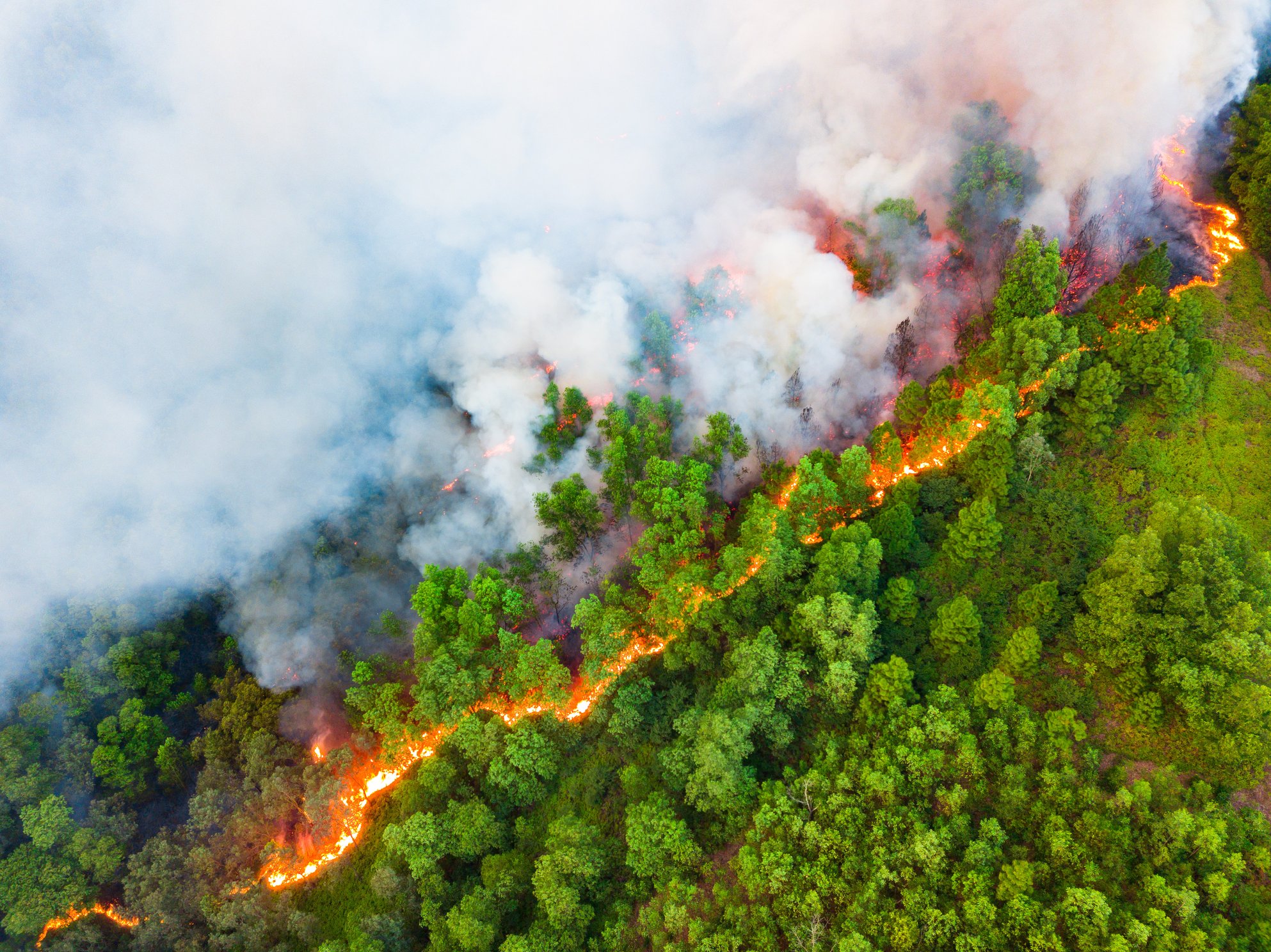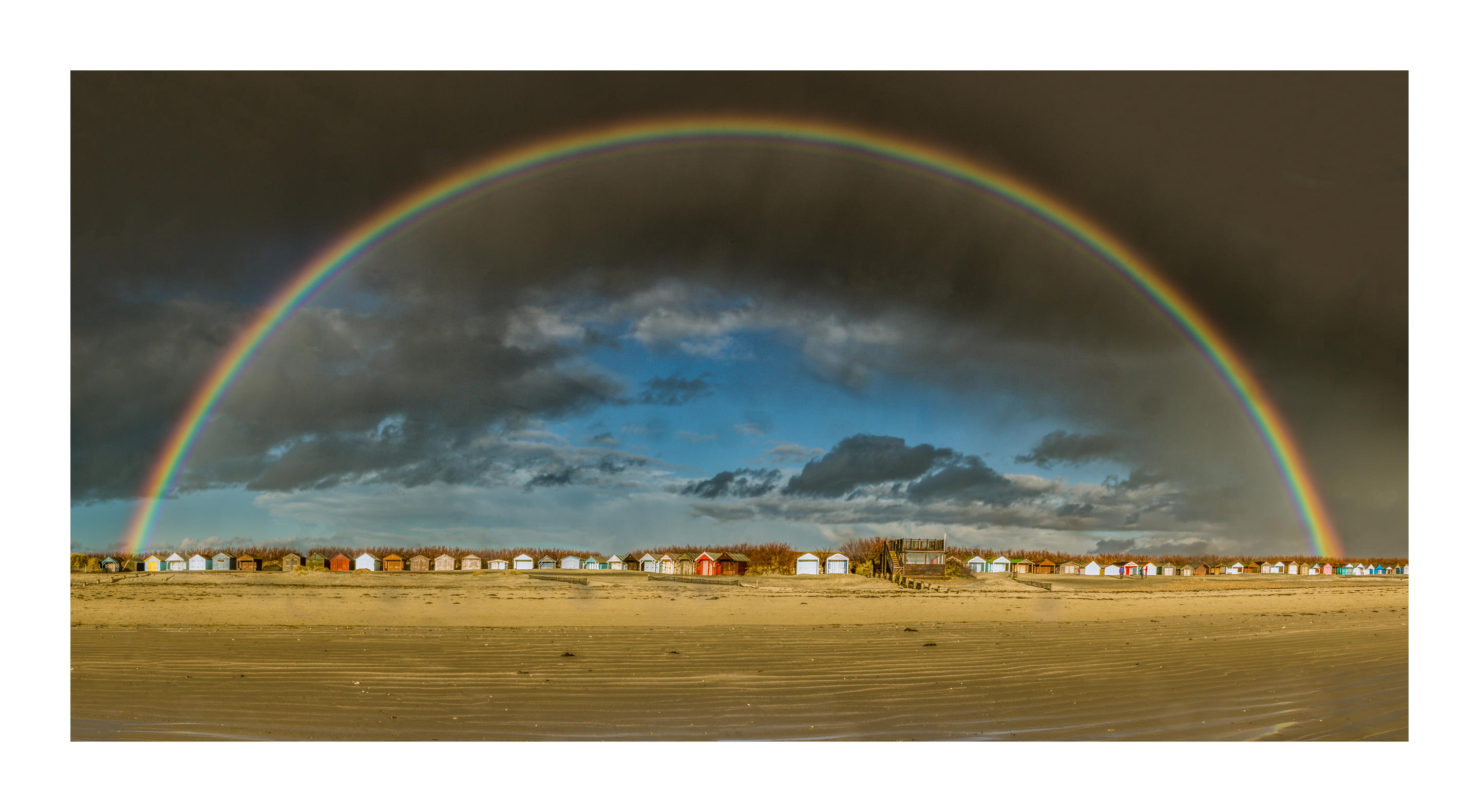

Weather Photographer of the Year: Setting the scene - optical phenomenon
Header image credit: Stuart Bennett
Many of the most amazing pictures submitted to Weather Photographer of the Year showcase optical phenomena. These can be roughly broken down into two main categories: rainbows and ice halos.
Rainbows
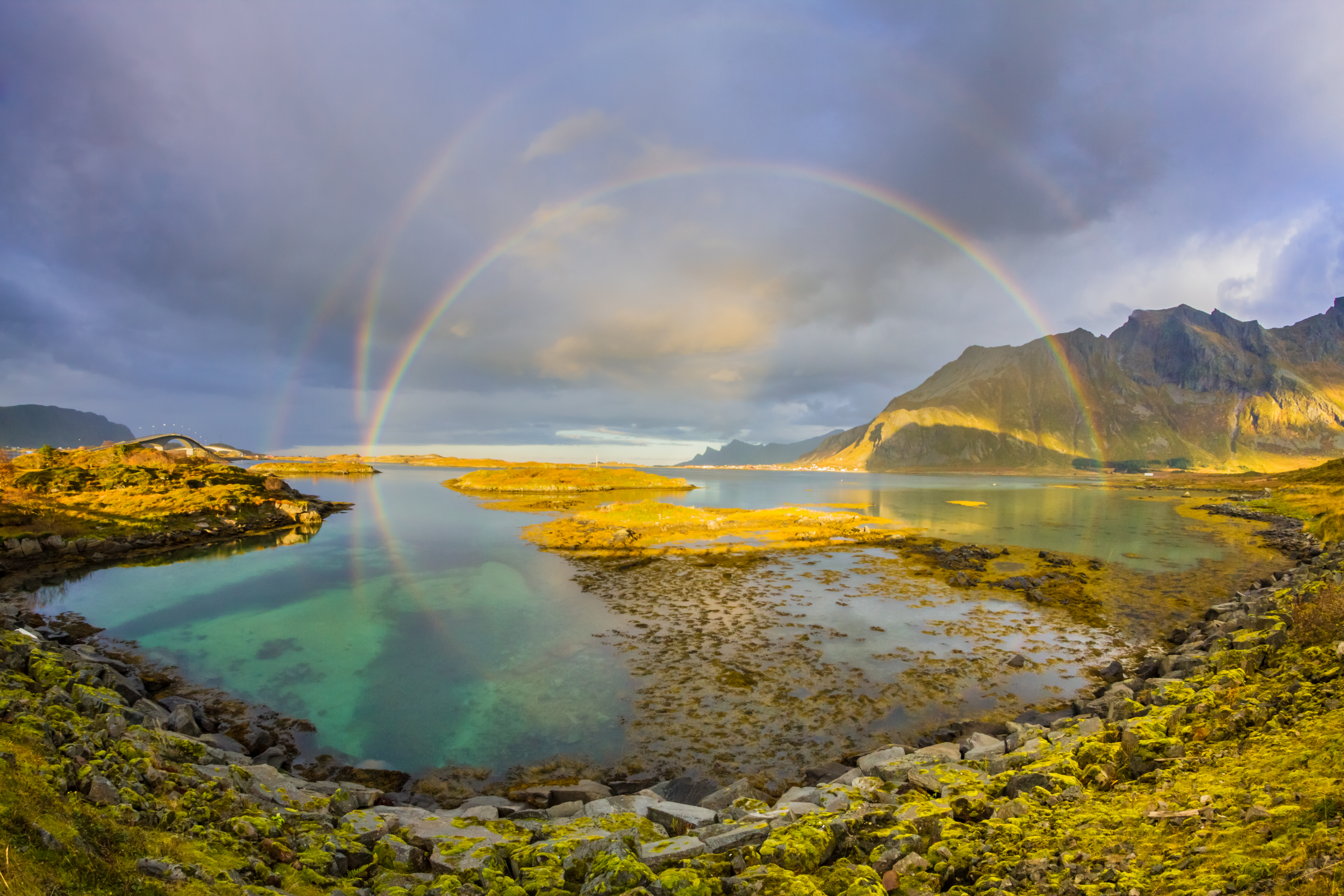
We’ve all seen rainbows and double rainbows, which are both formed as light reflects off large raindrops. Can there be triple or quadruple rainbows? Kind of. The photo shown above is an example of a double rainbow with several additional 'reflection bows' caused by the water.
Every rainbow is a 360-degree arc, but you can only see the portion of them above the horizon unless you’re in a plane or on a mountain top.
The tallest rainbows can be observed just after sunrise or just before sunset because the angle of the sun is lowest then. They get shorter as you get closer to solar noon, and, in fact, you can’t see a rainbow exactly at noon (on the equator) because it is below the horizon.
Generally, because of the sun angle and ground objects blocking your view, it is rare to see a rainbow between 10 a.m. and 2 p.m. local time, though your latitude and the time of year make a difference.
Fog Bows
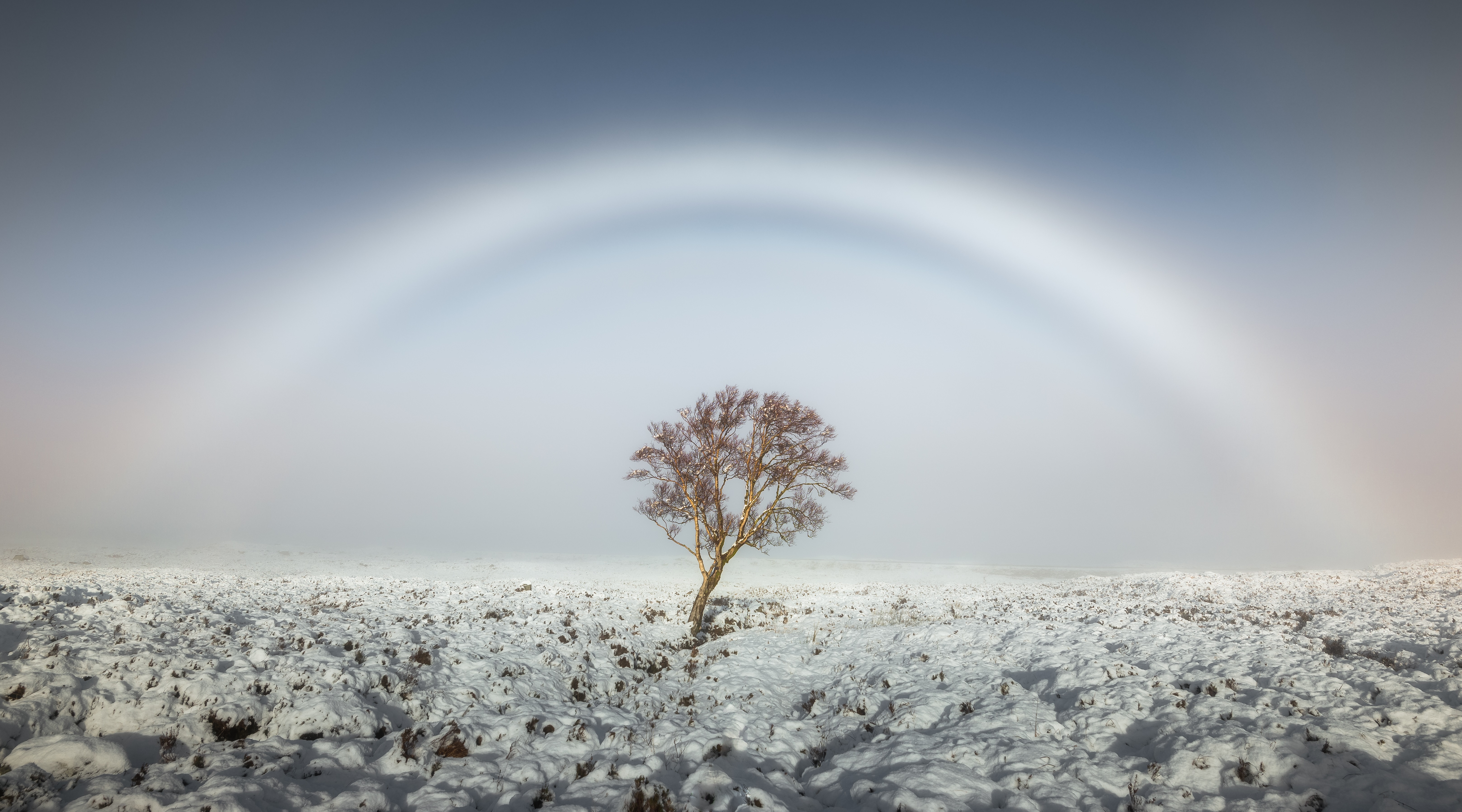
The cousin of the rainbow is the fog bow. Fog bows happen when droplets reflect light (the same as rainbows) but present little colour due to the tiny size of the droplets. Most often seen over snow as well as in mountains and cold sea mists, they can be hard to see, so look closely.
Brocken Spectre
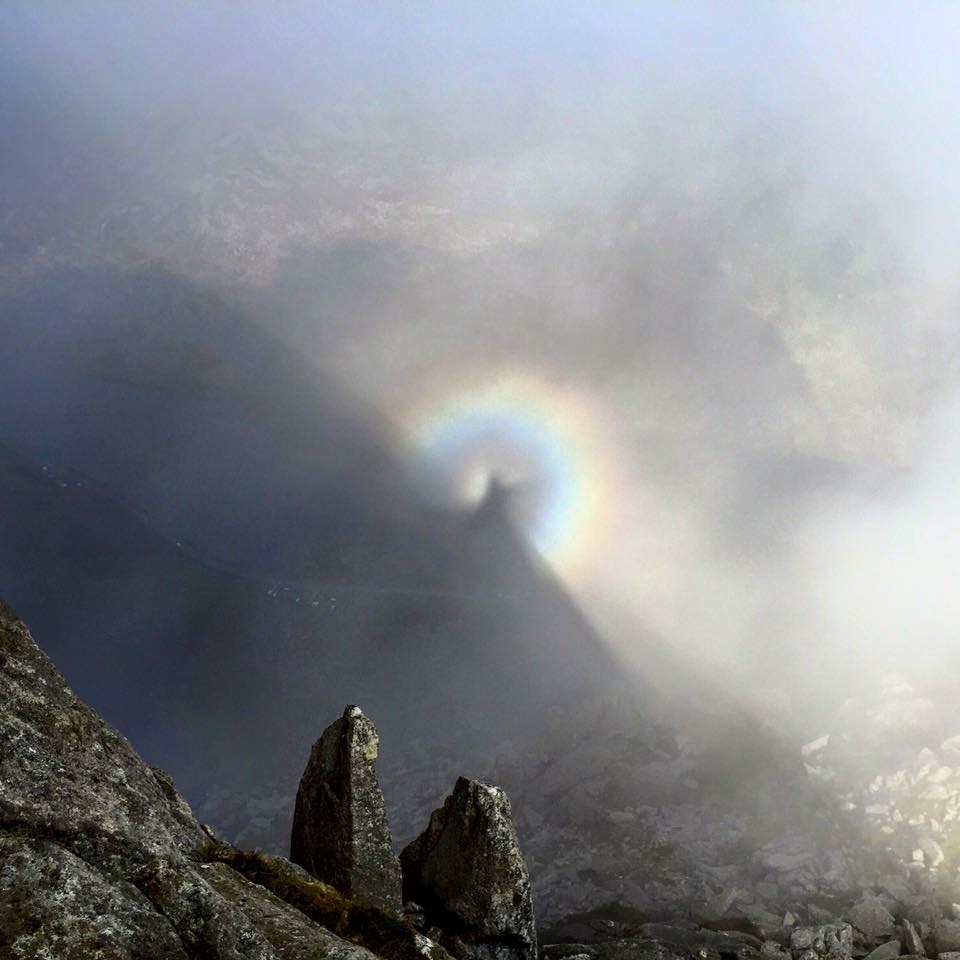
Another bizarre and rarely-seen fog optical phenomenon is called the 'Brocken Spectre', which is a magnified shadow of the photographer cast onto distant fog, an optical phenomenon so named because of frequent sightings on the Brocken, the highest peak of Germany's Harz Mountains.
Often surrounding the shadow is a coloured ring that is referred to as a 'glory', and this combination can only be seen from the perspective of the witness. Glories, with the plane’s shadow as the Brocken Spectre, are often seen from planes and travel along with the plane as it flies.
Ice Halos
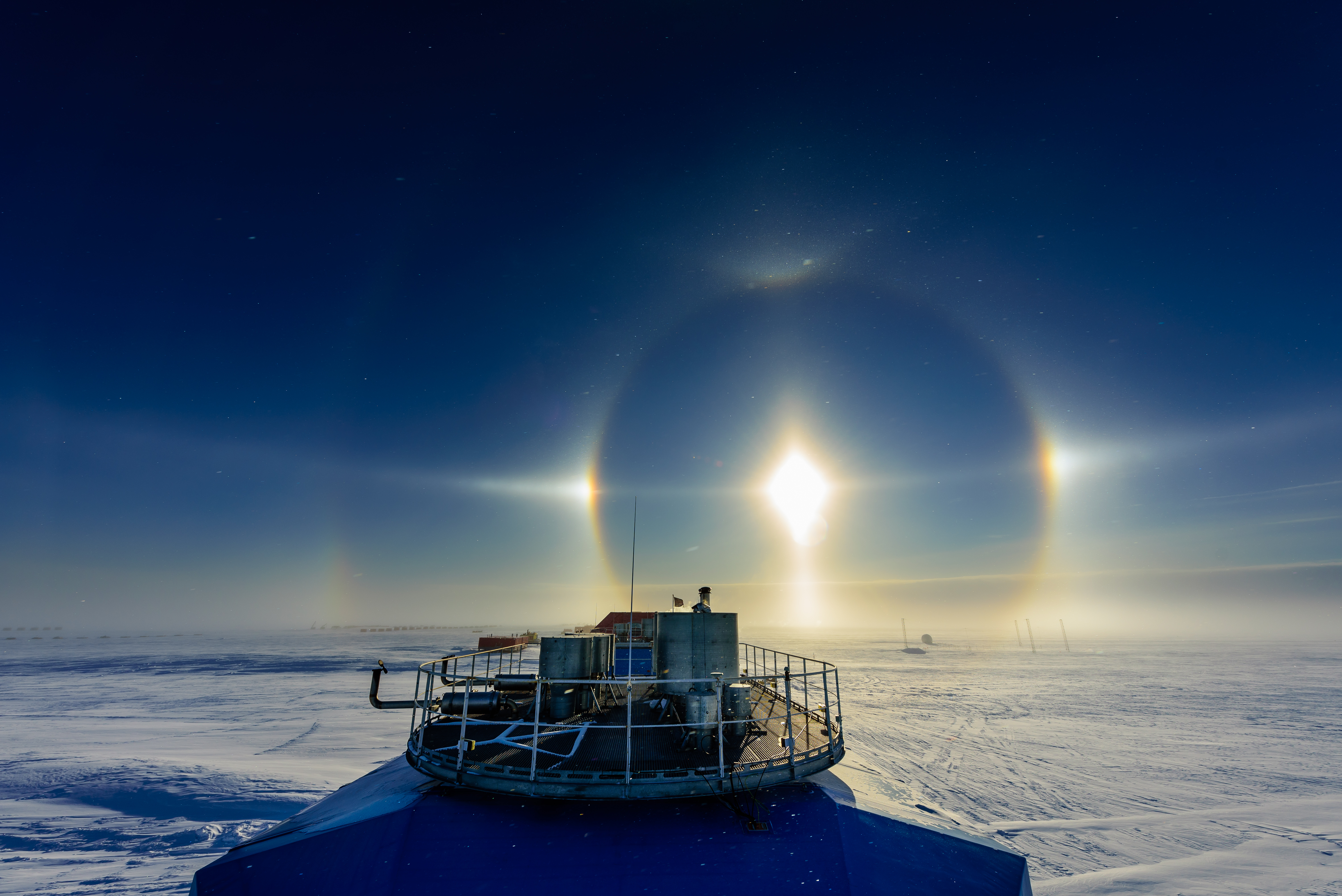
Ice halos form when light refracts through ice crystals, instead of raindrops, and are often seen during winter. The most common is the 22-degree halo (the bright circle in this photo) with sun dogs (bright spots on the halo, on either side of the sun).
Complex events like the one shown above can feature other ice halos too, such as tangent arcs, parhelic circles, and infralateral/ supralateral arcs. Sometimes clouds show only a stripe of rainbow colours, such as circumhorizonal arcs and circumzenithal arcs, the latter of which look like upside-down rainbows, as the colour order is reversed.
Tropospheric Optical Phenomena
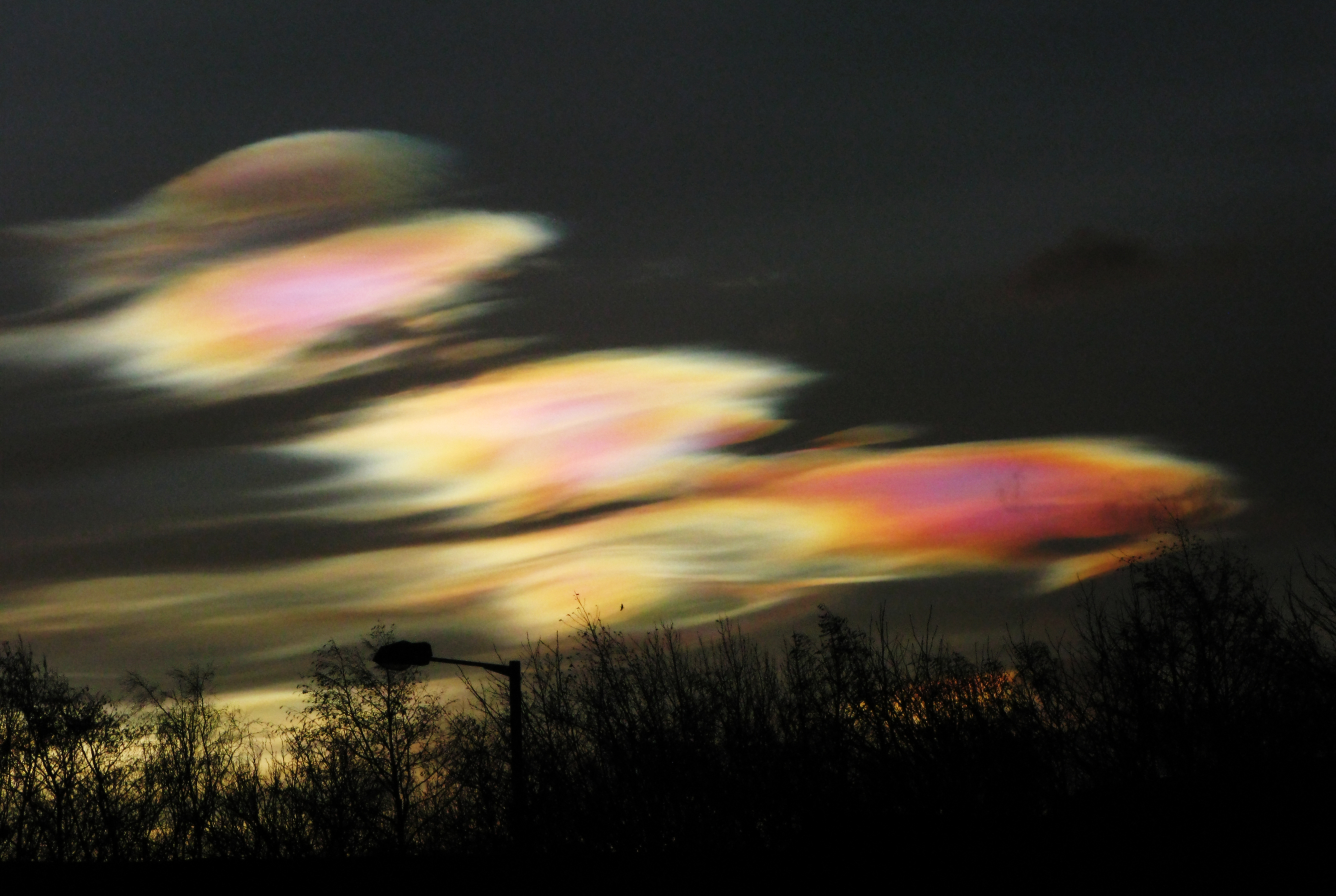
But wait -- there’s more! Other optical phenomena that occur above the troposphere (where all weather takes place) include Nacreous clouds (shown above) and aurora (featured below), as well as Noctilucent clouds and various rocket trails from spaceships via NASA and Space-X.
As you look to the skies for the Weather Photographer of the Year contest, if you’re lucky you’ll snap a picture of one of these brilliant phenomena.
About the Author:
As Social Media Manager and Senior Weather Editor for AccuWeather, as well as a meteorologist, blogger and photography enthusiast, Jesse Ferrell oversees the strategic management for AccuWeather’s weather news stories and social media channels, creating highly engaging posts that serve as a touchpoint for millions of fans, followers and platform community members. In 2005, Jesse became the first accuweather.com blogger during Hurricane Katrina and remains an active author for weather blogs today.
Before joining AccuWeather, Jesse developed an online group of weather enthusiasts and reporters, WeatherMatrix, where he served as founder and president for almost a decade.
Jesse earned his BSc in Meteorology from the University of North Carolina at Asheville. In his spare time, Jesse enjoys chasing storms, photographing weather conditions and spending time with his family.
Follow Jesse @weathermatrix

